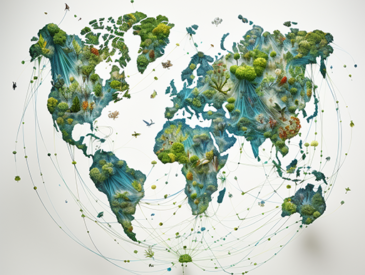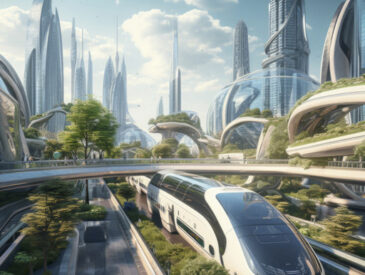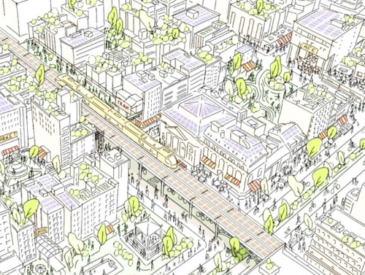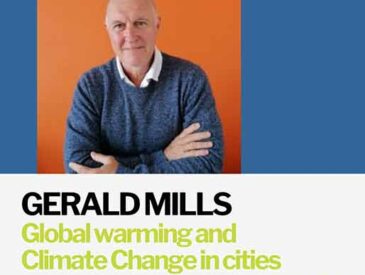List of Contents
Key points
- Glasgow as a green city over the centuries
- A green infrastructure to face urban heat islands
- Green Flag award: international prize for green areas
- More info about the concept of Resilient City
Glasgow green city during centuries
The medieval city of Glasgow in Scotland in the past was called Glaschu, which means “dear green place”. In the 18th century the city expanded into a major port and during the industrial revolution added a massive industrial base. In the 20th century the city started losing population because of the unsustainable pressure of globalization. In recent times, this process seems to be stopping and that is becoming a big opportunity for Glasgow to recreate its green past.
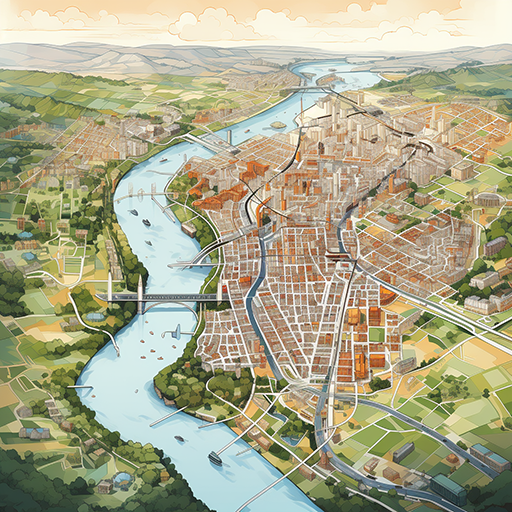
Evaluation system accounting for the different types of green cover
Emmanuel and Kruger (2012, see reference below) demonstrated that even after urban growth had ceased, Glasgow still experienced localized warming due to urban characteristics such as increased built-up areas, a lack of greenery, pollution and heat, which continued to create urban heat islands.
Some green spaces do not equally contribute to local cooling, and they also differ in their environmental and sustainability advantages. In light of this, urban planners have started to create evaluation systems that account for the varying environmental impacts of different types of green cover.
Elements of GAR (Green Area Ratio) include:
- Impermeable surfaces
- Impermeable surfaces from which all storm water is infiltrated on property
- Nonvegetated, semi-permeable surfaces
- Vegetated, semi-permeable surfaces
- Green façades
- Extensive green roofs
- Intensive green roofs and areas underlain by shallow subterranean structures
- Vegetated areas
Initially, there is a need for a target-setting system that considers the level of environmental risk specific to an urban neighborhood. Once the desired green cover target is established, the mentioned weighting system is employed to formulate various green infrastructure scenarios.
Mitigating urban overheating
An option analysis exploring the role of green infrastructure in Glasgow Region revealed the following (Emmanuel and Loconsole, 2015, see reference below):
- Green infrastructure could play a significant role in mitigating the urban heat islands.
- A green cover increase of approximately 20% over the present level could eliminate 30%-50% of the expected extra urban heat island (UHI) effect in 2050.
- This level of increase in green cover could also lead to local reductions in surface temperature by up to 2°C.
Glasgow green park: green flag award
Glasgow Green is one of the city’s oldest and most famous parks, established in the 15th century. Glasgow Green covers an area of approximately 136 acres and is situated along the north bank of the River Clyde. The park has received the Green Flag Award, a prestigious international prize that recognizes well-maintained and high-quality green spaces in various countries. The prize is typically given to parks and green areas that meet specific criteria related to factors such as cleanliness, sustainability, community involvement, and overall environmental standards.
References
-ARC3.2, Chapter 5, Urban Planning and Design https://uccrn.ei.columbia.edu/sites/default/files/content/pubs/ARC3.2-PDF-Chapter-5-Urban-Planning-and-Design-wecompress.com_.pdf
-Glasgow Green Park: https://www.glasgow.gov.uk/glasgowgreen
–Green infrastructure as an adaptation approach to tackling urban overheating in the Glasgow Clyde Valley Region, UK – R. Emmanuel, A. Laconsole https://www.sciencedirect.com/science/article/abs/pii/S0169204615000432
-Green Flag Award – https://www.greenflagaward.org/

